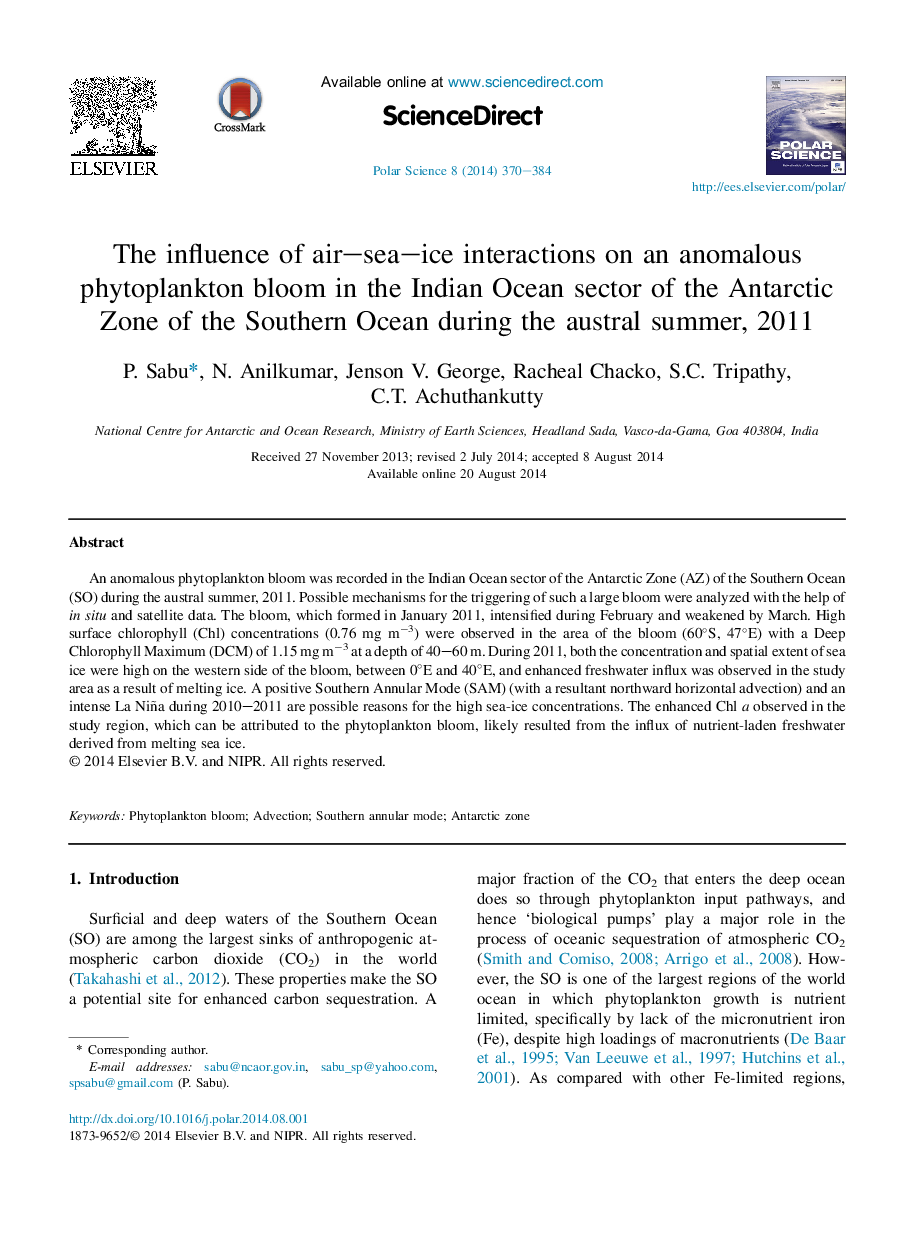| Article ID | Journal | Published Year | Pages | File Type |
|---|---|---|---|---|
| 4683325 | Polar Science | 2014 | 15 Pages |
An anomalous phytoplankton bloom was recorded in the Indian Ocean sector of the Antarctic Zone (AZ) of the Southern Ocean (SO) during the austral summer, 2011. Possible mechanisms for the triggering of such a large bloom were analyzed with the help of in situ and satellite data. The bloom, which formed in January 2011, intensified during February and weakened by March. High surface chlorophyll (Chl) concentrations (0.76 mg m−3) were observed in the area of the bloom (60°S, 47°E) with a Deep Chlorophyll Maximum (DCM) of 1.15 mg m−3 at a depth of 40–60 m. During 2011, both the concentration and spatial extent of sea ice were high on the western side of the bloom, between 0°E and 40°E, and enhanced freshwater influx was observed in the study area as a result of melting ice. A positive Southern Annular Mode (SAM) (with a resultant northward horizontal advection) and an intense La Niña during 2010–2011 are possible reasons for the high sea-ice concentrations. The enhanced Chl a observed in the study region, which can be attributed to the phytoplankton bloom, likely resulted from the influx of nutrient-laden freshwater derived from melting sea ice.
